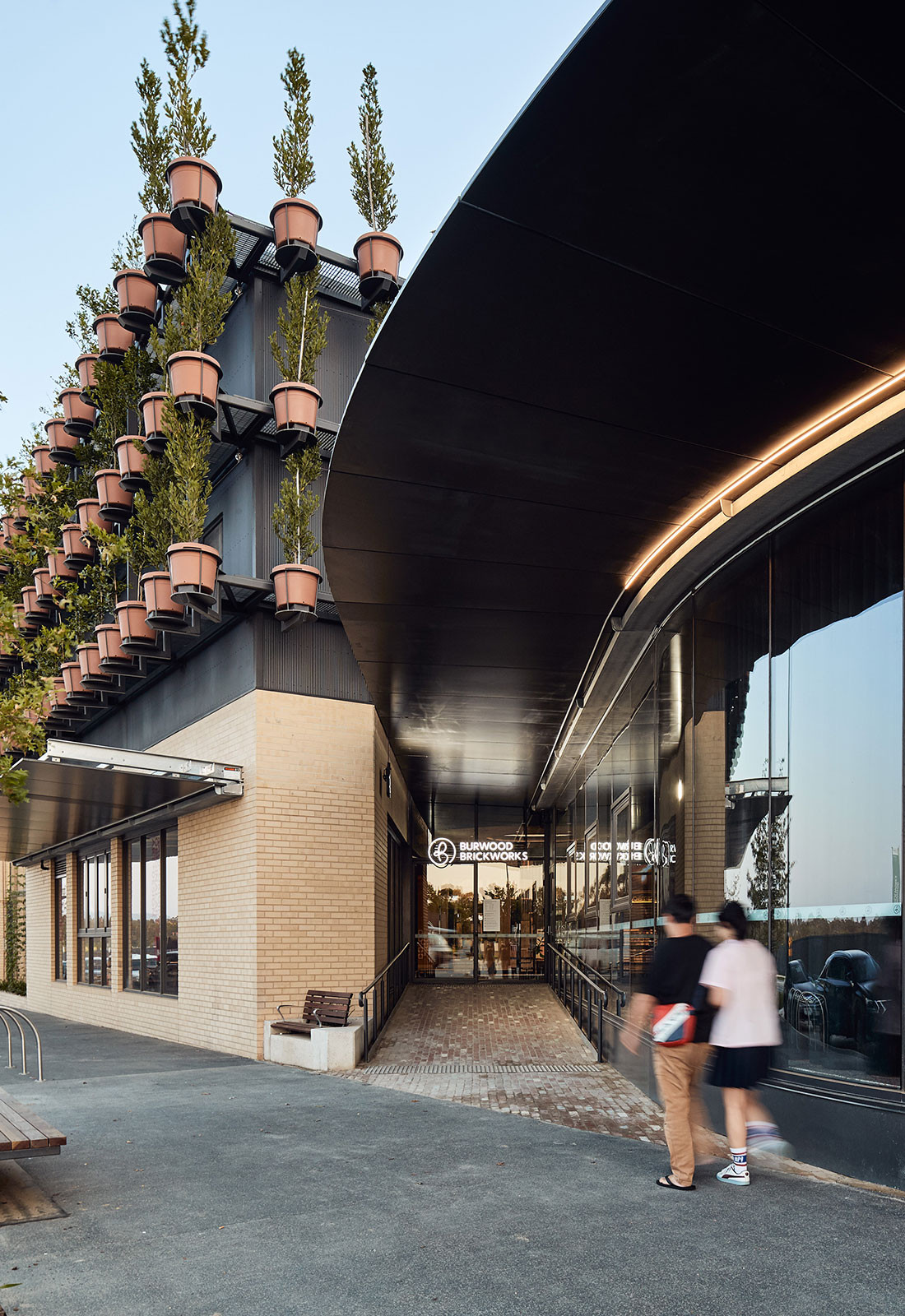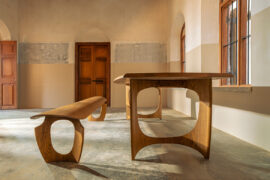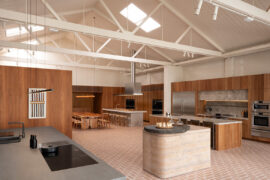To overcome one of the biggest challenges facing humanity, we must invest in everyday sustainable solutions and practices that reduce our carbon footprint and pave the way for a green and hopeful future.

September 14th, 2011
Throughout the architecture and design industry, the focus on more sustainable practices and production is paramount. As the effects of climate change on the natural world have made themselves more known than ever before, there has been an ever-increasing need to decrease our carbon footprint to achieve a better, more liveable and green future.

Photography credits to Dezeen.
Undercurrents of activism and engineering have been paving the way in creating more sustainable methods and practices across our architectural landscape. Amongst this is the growing use of recycled building materials: a building trend that is becoming more and more popular. These products include recycled building materials that already exist on site such as recycled plastic bricks, recycled concrete blocks and timber that are readily available and sourced from a collection of second-hand suppliers or building yards.
More inventive reclaimed building materials such as bottle bricks, tires and even mushrooms have revolutionised the way we construct and interact with the materials around us. Along with sustainable advantages, the cost benefits of using second-hand, versatile and highly durable supplies make them one of the most ideal choices for building.

Photography credits to CertifiedEnergy.
Reclaimed building materials are the perfect ‘green’ solution for any construction project. Materials as diverse as timber, concrete, steel and bricks are all able to be reused with incredible results. Similarly, new building materials constructed from other recycled products (such as building blocks made from waste plastic) are being utilised in a wide range of design projects. In the Australian design industry, recent years have seen a trend towards sustainable design projects – with supplies and inspiration readily available, building a house with recycled materials is now more possible than ever before.

Photography credits to ArchitectureandDesign.
A prime example is the family home by builder, Quentin Irvine in Beautfort, Victoria. Shifting away from conventional weatherboard-clad homes, this unique residence pays homage to the iconic Australian woolshed. Throughout the home, recycled materials take pride of place in every detail – from the exterior; to the floors; internal walls; all the way through to the bathroom features.
Recycled Timber

Photography credits to Ironwood.
Timber is one of the most popular recycled construction materials. As a natural material, designers can use weathered timber to achieve a warmer or more rustic feel. Alternatively, second-hand pieces such as recycled weatherboards are the perfect solution where timber is required, but aesthetic considerations are less prioritised. In addition to reducing the cost of projects, recycled timber reduces the number of trees which need to be logged and processed to create building materials.
Recycled Bricks

Photography credits to Stone3.
The demolition of existing structures provides an opportunity for second hand bricks to be given a new lease on life. Both concrete and plastic bricks are able to be reused, and remain a reliable building product even after their use in previous projects.
The use of recycled building materials such as bricks significantly reduces the carbon footprint of new projects, by eliminating the need for excess manufacturing. Accordingly, bricks purchased second-hand come with a much lower price tag than their original counterparts.

Photography credits to IndesignLive.
Recycled bricks featured in the recent Burwood Brickworks development in Melbourne’s east, where sustainability was manifested through materiality. A nod to the development previously occupying the site, recycled bricks both contributed to the development’s eliminated carbon footprint, and preserved a sense of the area’s history.
The availability of reclaimed building materials is a testament to how popular they are becoming in Australia’s design industry. Across Sydney, Melbourne, Perth, and Brisbane, there are salvage yards and natural material recyclers to cater for the supplies needed across diverse projects.
Photography credits to AdelaideRuralSalvage.
Sydney
Melbourne
Perth
Brisbane
Adelaide
–
Waste Plastic Blocks

Photography credits to ExpertSkipHire.
As the world faces an ever-growing waste management dilemma, designers turn to innovative solutions to enhance their designs through sustainability. Building blocks made from waste plastic are commonly used in low-income housing developments, or in regions and nations where waste management is a more highlighted problem.
The possibilities for their use are only expanding. There are a variety of building blocks on the market, the most popular being made from waste plastic compressed into construction-ready dimensions. They have the double benefit of improved functionality (demonstrating superior thermal and acoustic performance) and reducing the load on traditional waste management facilities.
Bottle Bricks

Photography credits to TRTworld.
Bottle bricks, available in a variety of forms, are an example of environmentally focused design thinking. These include plastic bottles packed with sand or other recycled plastic, and glass bottles purpose-built for a second life as building materials.
As is common with most recycled building materials, bottle bricks are versatile, easily sourced, lower in price and come with a much less significant carbon footprint.
Recycled Steel

Photography credits to ScrapMetalSydney.
Steel is a perfect choice for a recycled construction material. Often commissioned for infrastructure projects, the excess or scrap metal can be melted down and re-cast for new and different designs. The benefit of recycled steel is that the material maintains its best qualities even after being recycled as the process to re-use steel does not compromise its integrity. While steel is typically used in high-budget projects, the use of recycled steel can make it a more accessible choice for a wider variety of designs, keeping quality high on a reasonable budget.
Ferrock

Photography credits to User on Flickr.
Ferrock is an emerging construction material which is highly sustainable. With similar properties to concrete, the usually unusable steel dust from construction projects is mixed with a small percentage of other recycled materials to form Ferrock. Its high percentage of recycled material input lowers its general cost, and as a developing material it remains accessible.
The key selling point of Ferrock is its environmental benefit though carbon negativity – the material’s hardening process includes a level of carbon dioxide absorption higher than its carbon dioxide output.
Mushroom

Photography credits to BuildingGreen.
Not just a food offering, mushrooms play a significant role in paving the way for a greener future. Beneath the surface, mushrooms and other rotting organisms such as tree trunks and agricultural byproducts grow mycelium – an organism that develops a glue-like substance that can be used to bind materials together.
Although we are only in the primary stages of mycelium technology, this innovative material is completely organic, biodegradable, fireproof, water resistant and exceptionally durable. The natural material integrity of mycelium lends itself to a fast, easy and cost-efficient material production.
What does this mean for the future?
The use of recycled materials in the construction process is a large step towards reducing our carbon footprint. Not only are these products environmentally beneficial; it encourages the industry to explore, experiment and discover new, groundbreaking methods for a restorative future. With the ever-increasing advancements in technology and refining our current techniques and understandings of the natural world, together, the industry can create products that support sustainability and regeneration. The myriad of readily available recycled building materials from recycled bricks; to reclaimed building materials such as mushrooms; mean that the future is limitless.

Photography credits to Renew.
INDESIGN is on instagram
Follow @indesignlive
A searchable and comprehensive guide for specifying leading products and their suppliers
Keep up to date with the latest and greatest from our industry BFF's!

London-based design duo Raw Edges have joined forces with Established & Sons and Tongue & Groove to introduce Wall to Wall – a hand-stained, “living collection” that transforms parquet flooring into a canvas of colour, pattern, and possibility.

CDK Stone’s Natasha Stengos takes us through its Alexandria Selection Centre, where stone choice becomes a sensory experience – from curated spaces, crafted details and a colour-organised selection floor.

The Influencer in the INDE.Awards is a category that stands tall and proud in aspects of sustainability and forward-thinking design and the shortlist this year are gamechangers across the Indo-Pacific region.

Global e-commerce tech company ROKT has a revitalised, art-filled workplace in Sydney thanks to Hammond Studio’s reuse-focused design.
The internet never sleeps! Here's the stuff you might have missed

Architect, designer and craftsman Adam Markowitz bridges the worlds of architecture and fine furniture, blending precision, generosity and advocacy to strengthen Australia’s craft and design community.

The Fisher and Paykel Melbourne Experience Centre by Clare Cousins Architects with Fisher and Paykel Design and Alt Group has been awarded The Retail Space at the INDE.Awards 2025. As a winning project, it redefines the possibilities of retail architecture by creating an immersive, material rich environment shaped by place, culture and craft.